
Wildlife conservation has a long and difficult association with colonialism. In Africa, many of its early methods derived from violent and exclusive settler-colonial land management practices designed to fortify protected areas against the interests of local African and working-class people.
We are thrilled to announce the launch of a major new Faculty of Forestry field school in Africa. Beginning in May 2023, this new program will take 18 students into the heart of the savanna biome to work with and learn from rural community members. It will offer insights into the innovative forms of community-based natural resource management emerging in South Africa.
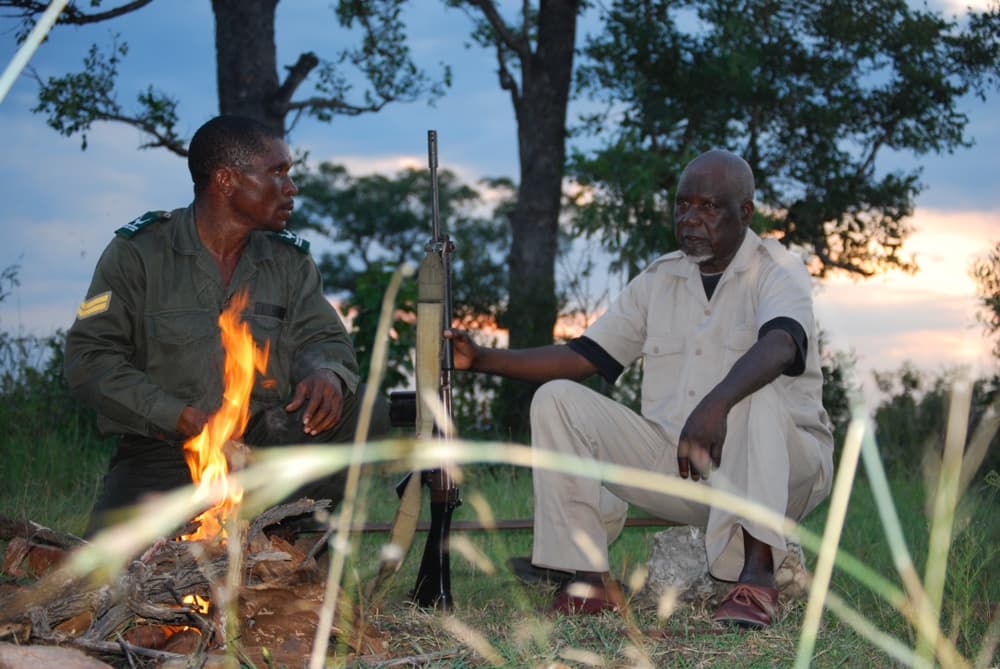
Our goal will be to understand the new landscapes of conservation associated with post-apartheid South Africa, and in the process, to explore the wicked problems faced by the millions of people living in poverty on the edge of protected areas. Unlike most study-abroad programs in the region, this is not a tour. It combines some very adventurous travel with detailed field experience, data gathering, and meaningful, long-term partnerships with rural South African communities.
The main focus is on social-ecological issues facing the 2 million or so people living on the edge of one of the world’s great game reserves: the Kruger National Park. Flying in to a research base in the southern part of the Park, we’ll spend time interacting with community leaders in Kruger’s southern border villages, studying land use/land cover change and rewilding in the Greater Kruger National Park region, post-apartheid land restitution, rural resource harvesting, and human-wildlife conflict. Moving through Kruger itself, travelling in open safari vehicles, we’ll experience the reserve’s remarkable savanna species diversity. Working with South African National Parks scientists, we’ll examine current issues around elephant and lion management, and the racial and economic complexities surrounding rhino poaching.
The course offers an intimate and interactive experience of different models of “decolonized” conservation management: innovative adaptive management in a national park; work with unarmed anti-poaching teams of black women in private reserves; an emergent community-conservation project on land returned to tribal authorities in the post-apartheid land claims process; a community-managed ecotourism and research base; and a high-end safari tourism lodge. A highlight of the course will be a week of fieldwork in the villages of Hamakuya, on Kruger’s northern border and close to Zimbabwe. Staying in platform tents and rural huts, we’ll be privileged to work with an energetic young team of African environmentalists associated with the Tshulu Trust, helping to support their resource management and ecotourism program.
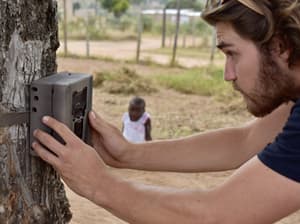
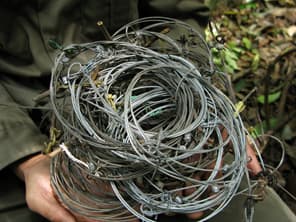
UBC Professors David Bunn and Melissa McHale will be leading this study abroad and field school program. Prior to their arrival at UBC in 2021, they had designed and managed major long-term field school experiences for institutions like the University of Chicago, Harvard, Arizona State, Northwestern, Colorado State, Duke, and Emory
Together they have considerable experience in the region, combining decades of work with local communities on the edge of Kruger, and having privileged research access to areas and facilities closed to tourists.
Snapshot 1: Field Day Mornings
The eerie whoop of a hyena wakes you at dawn, and you stagger to grab a mug of coffee and a rusk (South African versions of biscotti) before heading to one of two open safari vehicles [OSVs] to join your fellow UBC students.
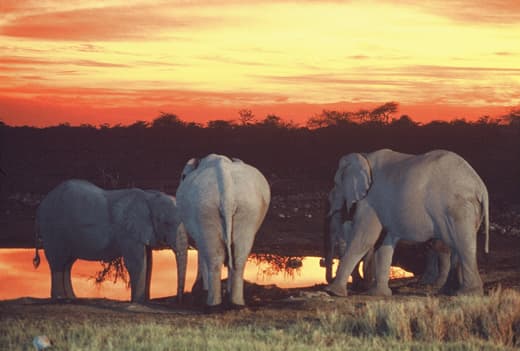
Thomas Ngobeni (the brilliant and jovial Shangaan field ranger) is driving that morning. He teases the group gently as he steers the large offroad vehicle towards the reddening horizon. Rounding a clump of sicklebush, on a sandy road not open to tourists, you see a skeletal Acacia nigrescens silhouetted against the sun, with white-backed vultures clustered on every branch. Vultures don’t really fly before the thermals start to rise around 10am, but they have chosen to roost overnight in this spot for a reason: through the dust, just ahead, you see three male lions resting on the road, utterly unconcerned about your approach. We know this coalition of brothers well. One of them is nicknamed Casper. He’s almost pure white (a recessive gene) and impressively large. Unfortunately, he and his comrades are sitting right next to the waterhole where we have planned to set up field cameras. We can’t get out of the vehicles for the moment, so we’ll move on to the next site.
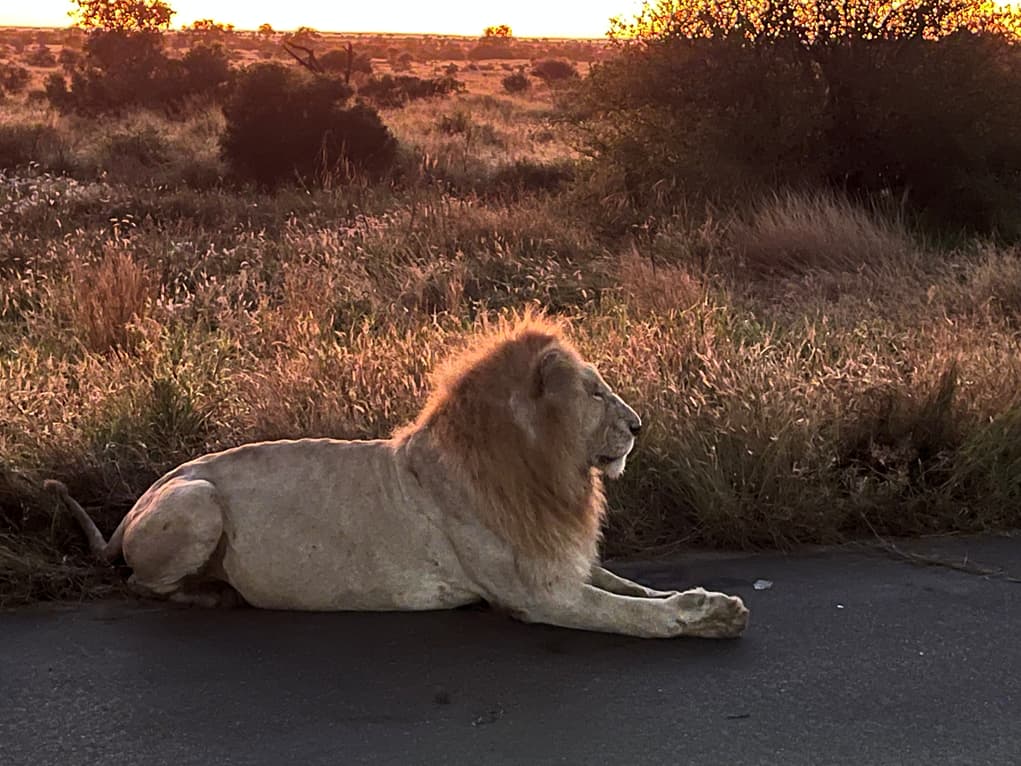
Two clicks (kilometers) on, we come to the waterhole we call Renosterkoppies (Rhino Hills). Our game guards alight from the vehicles, check their .458 rifles and the immediate surroundings, and gesture to you that it’s now safe to get down. We move quietly, and in single file towards the water, but of course all the animals have seen us and herds of impala are snorting their alarm calls, as zebra, wildebeest, and giraffe wheel away. At the waterhole edge, and in two teams, we’ll drive armoured field housing brackets into the ground and install and test the cameras, facing south and at knee height.
Maybe there will be time, too, to do a ground-truthing survey of vegetation. We know the exact GPS location of where the GEDI satellite on the International Space Station has taken its 25-meter waveform samples, and we can now go to one of those spots and, following a set of protocols, record plant and tree species, and canopy breadth and height. After that, we’ll backtrack to see if the lions are still there, and if they’ve moved on we’ll put up more cameras. Then it’s back to breakfast at 9.30 am at the research base, but maybe we’ll detour slightly to see that spot on the Nwaswitshaka river where we know a female leopard and cubs are hiding.
Breakfast is a pretty elaborate affair (vegan, Halaal, gluten-free alternatives available) served by our old friends, the team of Shangaan field caterers led by Shadreck Hlatshwayo. No time to tarry though: our first lecture of the day, on savanna ecology, will be from Dr. Navashni Govender, the world-renowned fire ecologist based in the Kruger National Park.
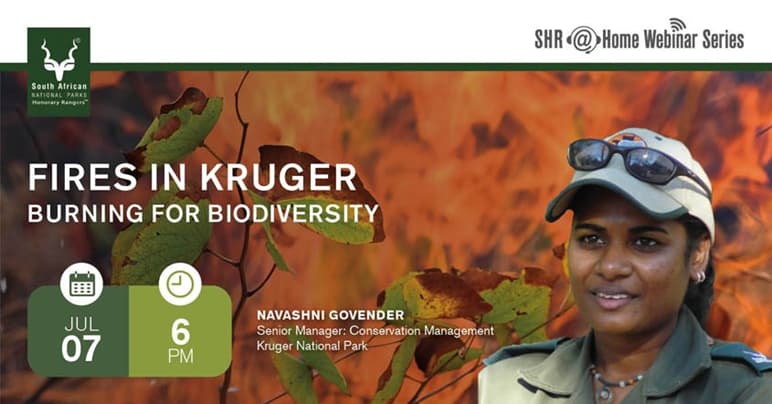
Snapshot 2: Hamakuya Homestays
You are suddenly, it seems, the local village kids’ main entertainment. It’s late afternoon, and you, your three UBC fellow students, and a village translator your own age are all making your way back from collecting water at a hand pump station near the Mutale River.
This is your second day in Tshianzwane village, and you are staying in a local homestead, hosted by Ruth R., a remarkable senior woman married to a sangoma (a traditional healer) named Obed, who is also a talented guitarist.
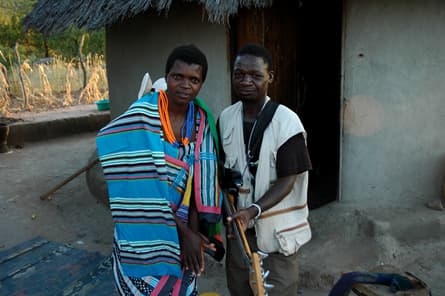

Your research task over the three-day homestay experience is to learn as much as you can, and with humility, about the metabolism of everyday life in a rural village. With the afternoon school ending, the local kids have followed you en masse down to the river. They have laughed uncontrollably at your clumsy attempt to balance a 20-liter water container on your head and stumble a few paces. This doesn’t seem to be a problem for Ruth, your homestay mother, who is striding ahead bearing a similar burden while also carrying an infant and a hoe. Yet the kids are friendly and enthusiastic: your lips are stained red from one of the delicious but unknown fruits from the bush they have offered you. They seem to know the names and uses of hundreds of indigenous plants, and they want to know about the plants you use from the wild in Vancouver, and about your cattle back at home.
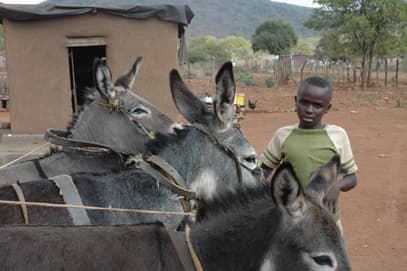
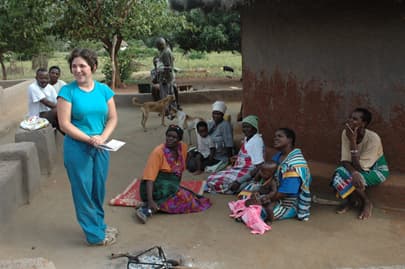
Your host homestead consists of three adobe huts (one for the family, one for cooking, and one for guests), decorated with exquisite geometric patterns in ochre, black and red. The host family has decorated the inside walls of your hut with mwenda, the colourful sarong-like garments worn by local women, and there are intricately woven grass sleeping mats for you to lay out your sleeping pads and bags. As night approaches, however, you’ll help to prepare the simple evening meal, consisting of morogo (wild spinach), and a staple maize dish you’ll produce, with assistance, by pounding kernels in a tall, decorated wooden vessel. Before retiring for the night, there will be an opportunity to work on your research projects: talking to women about the quantities and type of fuelwood they collect on a daily basis; the typical food they harvest, including mopane caterpillars, a major protein source; and exchanging stories and images for your Photovoice project.
Around the fire, with background cowbells chiming the unsupervised return of the herds, there will almost always be music and dancing. Venda culture is famously musical, with many styles of formal and informal drumming, dancing, and mbira playing. These events are not orchestrated for you; instead, they are part of a complex kind of social engagement that incorporates guests. Once again, children, youths, and ironic elder women are at the heart of this joyous system. It can be wonderful and tiring at the same time, and you might very well want to strangle the rooster that wakes you at the next dawn.
Comments are closed, but trackbacks and pingbacks are open.